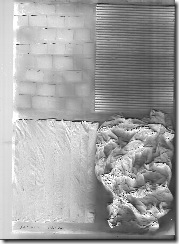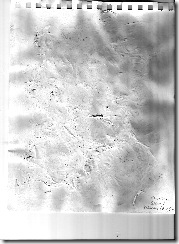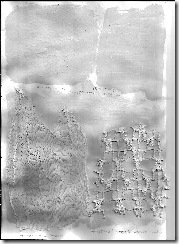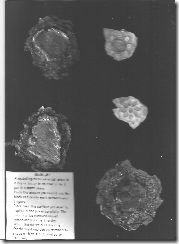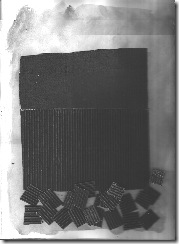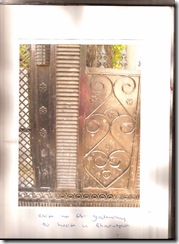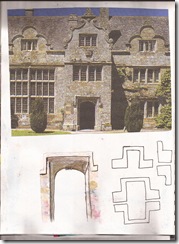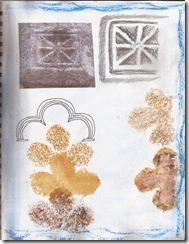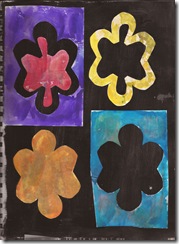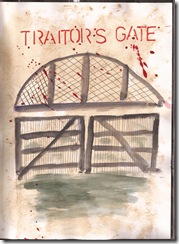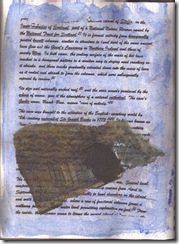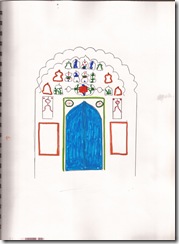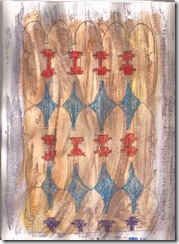This section was very much “what if”. I enjoyed using various items some of which are perhaps unusual and for manipulating the fabric tried PVA, polyfilla, paverpol and water soluble that has not been washed out completely.
Here is a selection– all painted with acrylic to give plain finish to provide texture and relief:
3.1 Clockwise: cut sticky squares; corrugated card; pleated tissue and scrunched tissue
Cut out card shapes; broken eggshells
3.3. Dried melon pips covered with tissue paper
3.4 Onion slices covered with tissue paper
3.5 Onion skins
3.6 Clockwise: acrylic emulsion painted onto card then drawn into with the edge of a piece of card; acrylic emulsion painted on then “pulled up” like rough icing; open weave fabric; scrim strips
3.7 Using glue gun squeezed onto freezer paper. If using a hot glue gun this is done onto water. The shape can be more formal and can be stitched into/over to apply to fabric.
3.8 Modelight: a commercially available modelling paste that has had moulds pressed into it then painted. When dry it can be applied to fabric and stitched.
3.9 Xpandaprint: another commercially available paste similar to modelight in use but is a softer “paint on “ paste which is heated with a hot gun to expand giving a raised texture surface. This can be stitched and painted.
3.10 Fingals cave using corrugated card
3.11 Fingals cave using scrunched, torn and pleated tissue
